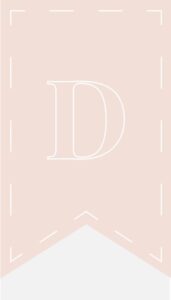I’ve thought a lot about what I would tell my freshman self if I were looking back. Interestingly enough, my answer has drastically changed in the last few weeks. I would likely begin by carefully breaking it to myself that graduation wasn’t going to go quite as scheduled. I’d probably also go ahead and remind myself to wash my hands. I’d still assure myself that Auburn will take care of everything.

I would likely also advise myself to go ahead and switch majors. When I was a freshman, I was a pre-business major and I planned to declare marketing. Though marketing is more often linked to advertising, which was my original plan going into college, I would explain to myself that the math is not worth it and that marketing is very sales-focused. Meanwhile, I find a lot of purpose in working more with people. I likely would’ve gone for a double minor in business and psychology, and would likely have a better GPA.
I would explain to myself that I could have the best of both worlds. I would tell my young and hopeful self that it is both possible to work somewhere and feel fulfilled both creatively and emotionally, by constantly seeing new and exciting things in a controlled environment and all the while helping others. This might have helped me prepare a bit more for my future at Auburn, and I likely would have dived into research about all kinds of PR possibilities. At the time, my only understanding of public relations was “spin,” although I didn’t have nearly enough experience with it to form a complete opinion.
Because of this, I would probably have told myself what exactly public relations is. I often just referred to PR in an offhand way, mostly when making a comment about a negative situation and saying “now that’s some bad PR,” all the while thinking I totally had a clue. What I didn’t know is how integral public relations is to all public figures. I didn’t realize public relations had an effect on credibility, profits, the thoughts of audiences, and online presence. Likely, online presence would have surprised me most of all. As much as advertising always excited me (billboards, commercials, campaigns spanning multiple mediums), branding was always closely attached to my drive to work with businesses, especially in an agency.
Certainly, I’d have needed to know that branding falls under the umbrella of public relations. I never thought about the necessity of recognizing a brand and how to do that across mediums. I never imagined that branding, with how pretty and creative it was, had so much to do with building familiarity and trust with consumers. I might have followed some of the Instagram pages we’ve looked through since I started this class, and likely would have gotten excited about the possibility of creating something new, beautiful and necessary.
Finally, I would have broken all of this down and explained to myself to what I needed to focus my attention. Even once I’d started in the public relations major, I had no idea if I wanted to be involved in agency work or if I wanted to work with a department within a business. It seemed that as soon as I knew, I found out about boutique agencies. I received a flyer not too long ago that broke down the largest questions for up-and-coming PR professionals. They included whether to become involved with an agency or not, and if so whether large or boutique. It mentioned the steps of deciding your focus and what you want to accomplish. I would have told myself that, for me, large agency is definitely the right place. At the end of it all, I also would have told myself that, yes, you’re going to get there. Good work.




